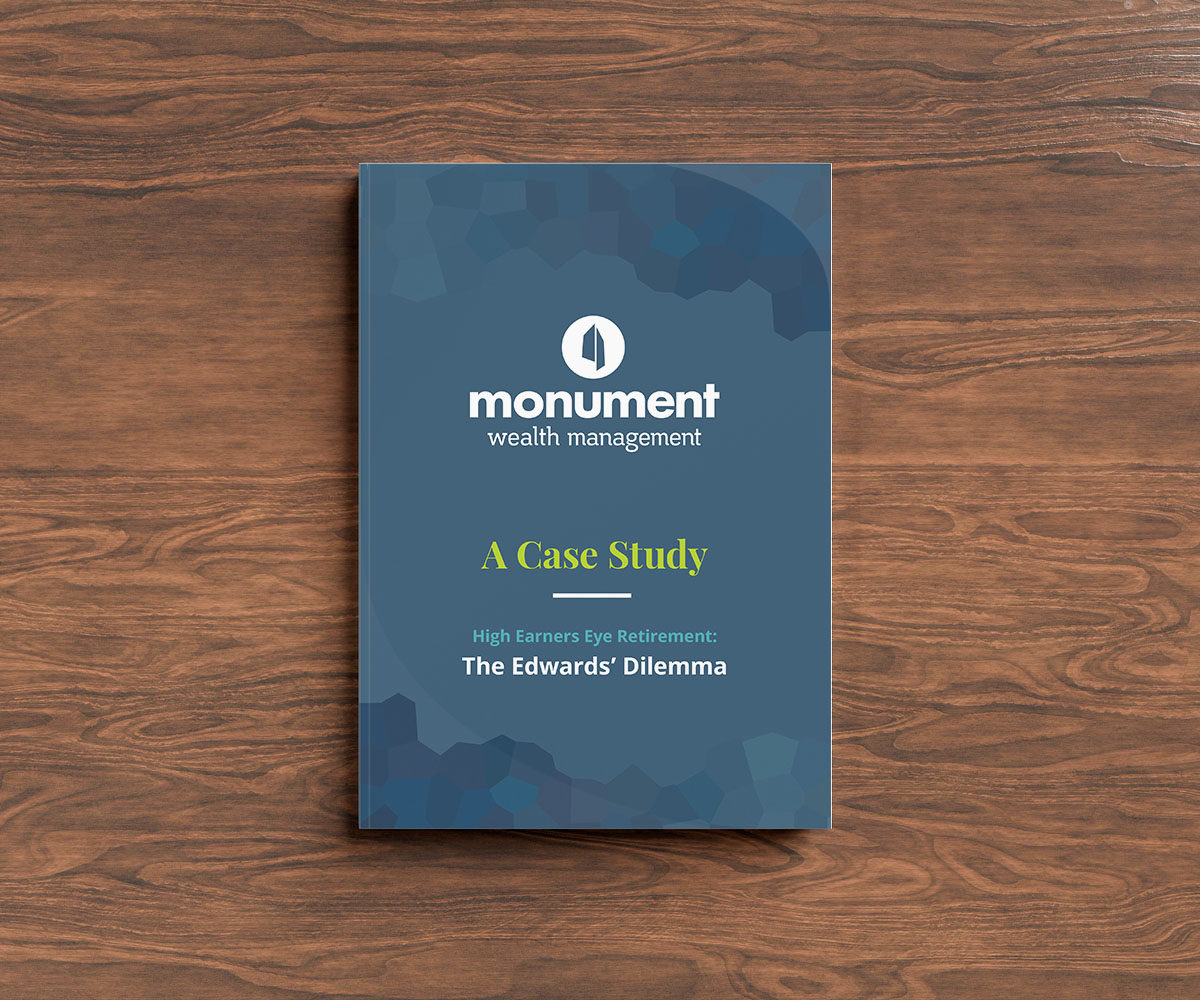Monument Wealth Management Articles
What Can 529 Funds Be Used For? Here’s What They Do (And Don’t) Cover

Share on your favorite platform, or by email
I’m sure you’ve heard of parents depositing money into 529 accounts to pay for their childrens’ education. College isn’t getting any cheaper, and these accounts offer tax advantages while letting you grow funds to pay for future education.
So, what can 529 funds be used for? While they can be financially beneficial, there are rules and limitations that you should know so you aren’t hit with unpleasant surprises later.
Required expenses, no frills
529s cover REQUIRED expenses only, but what qualifies as “required”?
- Tuition and fees can be fully covered for college, but for K-12 is limited to $10,000 per year.
- Books are covered only if they are required for a course. College bookstores can be fun to shop with all the school’s latest swag, but be careful of blindly covering any purchase from the bookstore that comes through on the student’s account! Only required items for the course will apply.
- Supplies are similar to books—only those required for courses qualify.
- Computers and related equipment such as internet routers are covered but smartphones aren’t.
What the IRS doesn’t consider required:
- Transportation: The IRS doesn’t consider transportation a “required” expense, no matter how far the student has to travel to attend class.
- Health insurance: The IRS doesn’t see student health insurance as a qualified expense or required for attendance.
Pro Tips:
- Have 529 distributions made payable to and sent directly to the school where possible to reduce the risk of making a non-qualified distribution subject to taxes and penalty!
- 529 withdrawals for education expenses might decrease your eligibility for education tax credits, such as the American Opportunity Tax Credit or Lifetime Learning Credit. If you qualify for those tax credits you’ll need to weigh whether you’d like to spend 529 funds now or let them grow and compound while taking the education credits. Make sure to consult your financial advisor or CPA.
On-campus or off-campus room & board–but be careful
Room and board are virtually necessary and add a substantial amount to your college bill, but you have to be careful. The costs can’t exceed the greater of the following 2 amounts:
- The allowance for room and board included in the school’s cost of attendance for federal financial aid calculations
- The actual amount charged if the student is living in housing operated by the school
Thankfully, most schools publish a page on their websites detailing the costs of attendance. You can often use those as references or contact the school to be sure.
Additionally, you can pay for both an apartment and groceries with 529 funds. Just ensure withdrawals for these expenses don’t exceed what the school includes as “room and board” in their cost of attendance.
Pro Tips:
- Keep careful records of those rent and food checks if sent directly to the student for tax time! Consider setting up a bank account dedicated to rent and food the student can access to receive 529 distributions earmarked for these expenses.
- Make sure qualified and non-qualified items are purchased separately and hold onto those receipts.
Beyond the traditional college setting
529 plans aren’t limited to strictly college expenses anymore. Here are some other ways you can use the funds:
- You can withdraw up to $10k per year from your 529 for K-12 tuition (private, public, or religious institutions). This is tuition ONLY–not other ancillary expenses.
- Apprenticeships – Not everyone chooses college–fees, equipment, books, and other supplies for registered apprenticeship programs are considered qualified.
- You can withdraw up to $10k (this is a LIFETIME limit) tax & penalty-free to pay down student loan debt—yours, your spouse’s, your child’s, or your grandchild’s. It’s important to note that you can’t claim any student loan interest deductions paid with this money.
Pro Tip:
- Consider trade-offs when using 529s for non-college expenses: you may be giving up longer-term growth potential with compounding tax-free earnings if you use funds for K-12 education or a beneficial tax deduction on student loan interest.
Eliminate Surprises
A 529 plan can be a great option for covering college costs, thanks to the tax advantages and compounding. Just remember, there are plenty of rules and limitations governing how you can use the money. Violate these, and you might face taxes or penalties.
Want help figuring out how to maximize the benefits of your 529 and see how college funding fits into your overall wealth management strategy? At Monument Wealth Management, we build Private Wealth Designs that serve as a blueprint for your life, financial and otherwise, to help you accomplish what is most important to you..
We’ll work with you to see how various college payment options, including a 529 plan, could fit into your Private Wealth Design. If you’re ready for a no BS approach to your finances and educational planning, let’s talk.

It’s time to find clarity around your finances and remove the anxiety of the unknown.
Read our case study, “High Earners Eye Retirement,” to see how we helped one of our clients with their wealth planning.
Ready for straightforward, unfiltered opinion and tailored advice for YOUR
questions, not everyone else’s?
IMPORTANT DISCLOSURE INFORMATION
Please remember that past performance is no guarantee of future results. Different types of investments involve varying degrees of risk, and there can be no assurance that the future performance of any specific investment, investment strategy, or product (including the investments and/or investment strategies recommended or undertaken by Monument Capital Management, LLC [“Monument”]), or any non-investment related content, made reference to directly or indirectly in this blog will be profitable, equal any corresponding indicated historical performance level(s), be suitable for your portfolio or individual situation, or prove successful. Due to various factors, including changing market conditions and/or applicable laws, the content may no longer be reflective of current opinions or positions. Moreover, you should not assume that any discussion or information contained in this blog serves as the receipt of, or as a substitute for, personalized investment advice from Monument. To the extent that a reader has any questions regarding the applicability of any specific issue discussed above to his/her individual situation, he/she is encouraged to consult with the professional advisor of his/her choosing. No amount of prior experience or success should be construed that a certain level of results or satisfaction will be achieved if Monument is engaged, or continues to be engaged, to provide investment advisory services. Monument is neither a law firm nor a certified public accounting firm and no portion of the blog content should be construed as legal or accounting advice.
A copy of Monument’s current written disclosure Brochure discussing our advisory services and fees is available for review upon request or at www.monumentwealthmanagement.com/disclosures. Please Note: Monument does not make any representations or warranties as to the accuracy, timeliness, suitability, completeness, or relevance of any information prepared by any unaffiliated third party, whether linked to Monument’s website or blog or incorporated herein, and takes no responsibility for any such content. All such information is provided solely for convenience purposes only and all users thereof should be guided accordingly.
Historical performance results for investment indices, benchmarks, and/or categories have been provided for general informational/comparison purposes only, and generally do not reflect the deduction of transaction and/or custodial charges, the deduction of an investment management fee, nor the impact of taxes, the incurrence of which would have the effect of decreasing historical performance results. It should not be assumed that your Monument account holdings correspond directly to any comparative indices or categories. Please Also Note: (1) performance results do not reflect the impact of taxes; (2) comparative benchmarks/indices may be more or less volatile than your Monument accounts; and, (3) a description of each comparative benchmark/index is available upon request.
Please Remember: If you are a Monument client, please contact Monument, in writing, if there are any changes in your personal/financial situation or investment objectives for the purpose of reviewing/evaluating/revising our previous recommendations and/or services, or if you would like to impose, add, or to modify any reasonable restrictions to our investment advisory services. Unless, and until, you notify us, in writing, to the contrary, we shall continue to provide services as we do currently. Please Also Remember to advise us if you have not been receiving account statements (at least quarterly) from the account custodian.